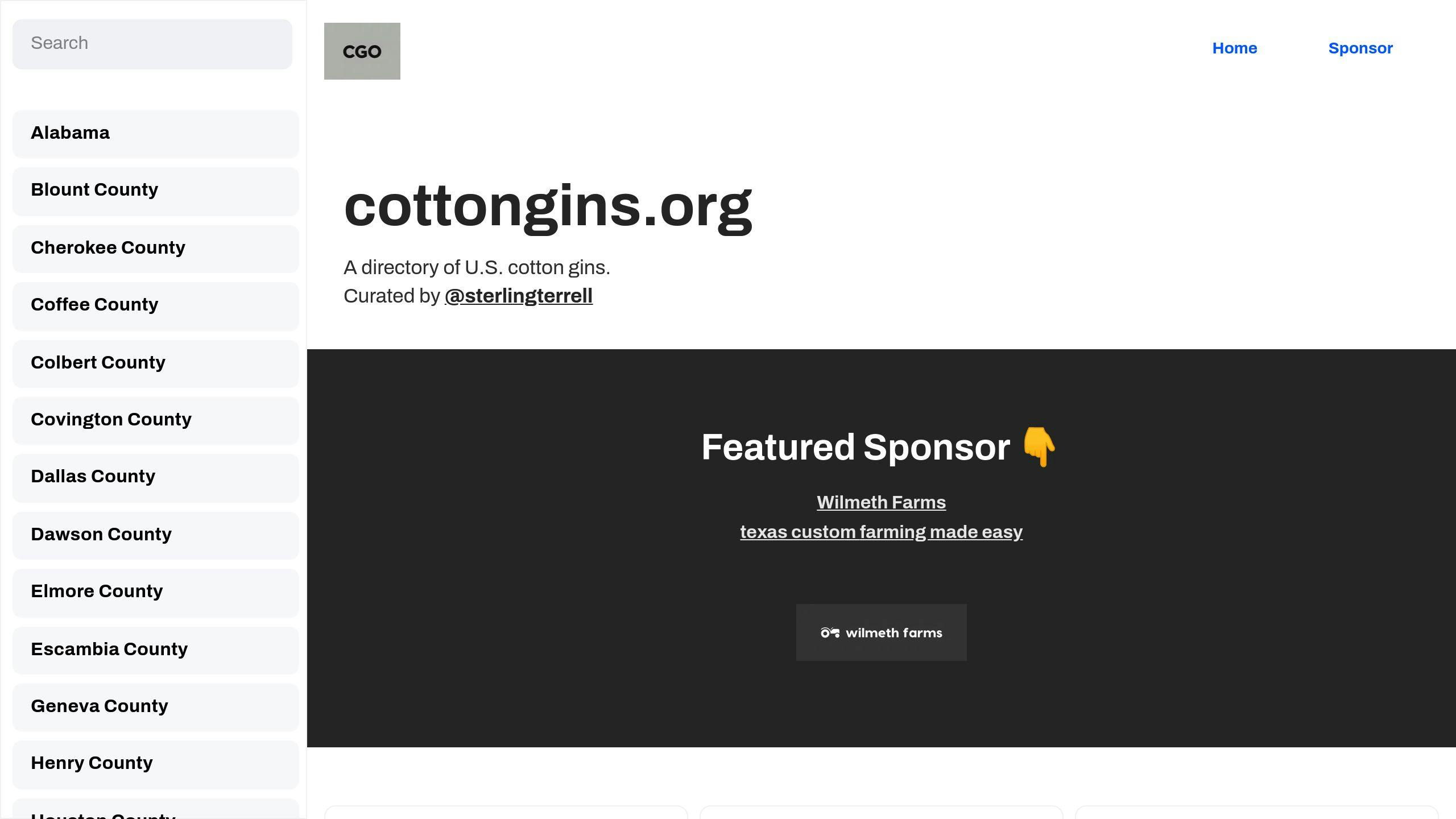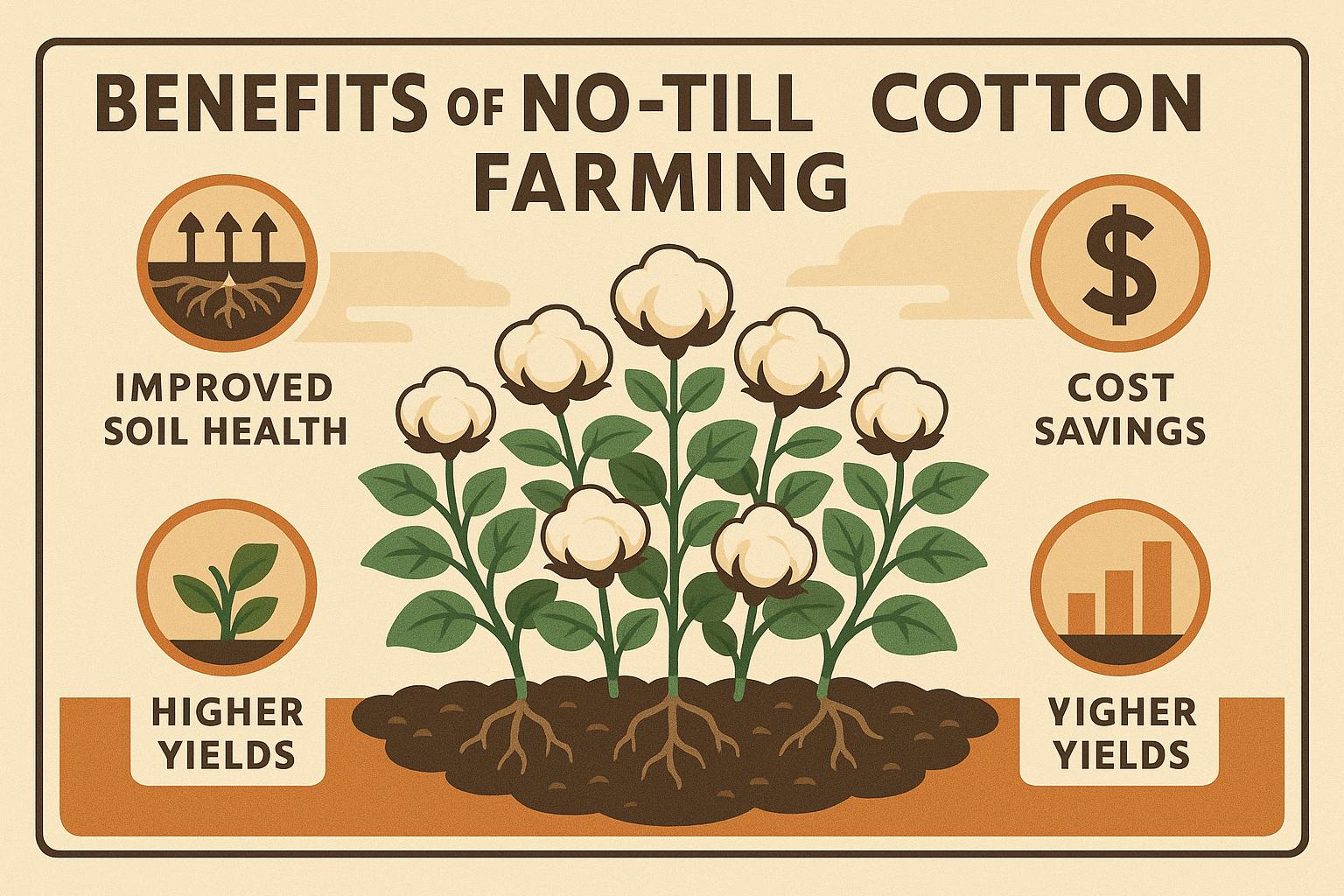Equipment downtime in cotton gins can disrupt production, increase costs, and reduce profits. Proper maintenance is the key to avoiding these issues.
Key Insights:
- Common Failures: Mechanical wear, hydraulic issues, and electrical faults are the main culprits.
- Prevention Tips:
- Regular inspections of strain rods, cylinder cleaner drum spikes, and press systems.
- Frequent oil testing and seal checks for hydraulics.
- Electrical system maintenance, including motor control centers.
- Off-Season Maintenance: Ideal time for in-depth repairs and system overhauls.
- Spare Parts to Stock: Hydraulic seals, motor components, and drum spikes.
- Professional Services: Consider hiring experts for advanced diagnostics and repairs.
Quick Action Plan:
- Schedule routine checks during the season.
- Perform detailed maintenance in the off-season.
- Keep essential spare parts ready.
- Follow manufacturer-recommended schedules.
Avoiding Equipment Failures: Essential Strategies For Efficient Machinery Maintenance
Common Causes of Equipment Failures
Knowing what typically causes equipment failures in cotton gins can help you take the right steps to avoid them. Here's a breakdown of the most common problems that lead to downtime.
Wear and Tear on Mechanical Parts
Mechanical parts endure heavy use during the ginning season, making regular checks essential. Key areas to focus on include:
- Strain Rods: These need frequent tightening and alignment checks. Neglecting them can lead to misalignment and eventual breakdowns.
- Cylinder Cleaner Drum Spikes: Constant exposure to cotton processing causes wear. Regular inspections ensure they remain effective.
- Press Systems: The press frame and ram must stay level, with fasteners secured and shims properly positioned.
Hydraulic System Issues
Hydraulic problems can shut down operations instantly. Here are the most common issues and how to prevent them:
| Issue Type | Impact | Prevention Measure |
|---|---|---|
| Oil Contamination and Seal Failures | Reduced efficiency, leaks, pressure loss | Regular oil testing and seal inspections |
| Line Degradation | Unplanned downtime, safety risks | Routine checks and timely replacements |
Keeping spare seals and hydraulic parts on hand can save valuable time [1][2].
Electrical System Problems
Electrical failures are some of the toughest challenges in cotton ginning. Advances like those from Lubbock Electric Co. show how modern motor protection can safeguard operations [4].
Key areas to monitor:
- Motor Control Centers and Wiring: Off-season inspections can catch potential faults and prevent major system failures [1][3].
- Control System Faults: Automation systems enhance efficiency but need specialized care to ensure smooth performance.
Steps for Preventive Maintenance
Regular maintenance is key to ensuring cotton gin equipment operates smoothly and avoids costly breakdowns. According to the Cotton Ginners Handbook, skipping preventive maintenance can seriously harm a gin's performance and efficiency [1].
Routine Inspections
Focus inspections on these critical components:
| Component | Inspection Focus | Frequency |
|---|---|---|
| Seed Cotton Equipment | Shafts and bearings | Weekly during season |
| Moisture Equipment | Calibration accuracy | Bi-weekly |
| Motor Control Center | Electrical connections | Monthly |
Trained staff should document findings to catch and address problems early, ensuring timely follow-ups [1][7]. While routine checks handle immediate concerns, more detailed maintenance during downtime helps ensure long-term equipment reliability.
Planning Maintenance During the Off-Season
The off-season provides the perfect window for in-depth maintenance tasks. Focus on these areas:
Motor Control Center Maintenance
This is the time to inspect and repair electrical systems. Tasks include checking connections, replacing worn components, and verifying motor protection systems [1][3].
Hydraulic System Overhaul
Overhaul hydraulic systems by replacing seals, cleaning parts, and updating fluid levels during the downtime.
"To neglect preventive maintenance and timely repairs squanders the gin company's investment" [1].
While off-season maintenance is crucial, having essential spare parts ready during the busy season is just as important.
Keeping Spare Parts Ready
Proactive spare parts management is another critical part of preventive maintenance.
Essential Spare Parts to Stock
- Hydraulic seals
- Motor protection components
- Cylinder cleaner drum spikes
Use a detailed inventory system to track what’s available and where to source replacements. Keeping these critical parts on hand ensures quick fixes during peak season, reducing unexpected downtime and keeping production on track [1][6].
sbb-itb-0e617ca
Creating a Maintenance Plan
A clear and organized maintenance plan helps reduce equipment downtime by tackling the main causes of system failures. For example, over two-thirds of electrical system failures can be avoided with proper maintenance strategies [1].
Following Manufacturer Recommendations
Set up maintenance schedules based on the following key elements:
| Component Type | Maintenance Frequency | Records to Keep |
|---|---|---|
| Electrical Systems | Quarterly | Inspection/test reports |
| Hydraulic Components | Monthly | Fluid/pressure data |
| Mechanical Parts | Weekly during season | Wear/alignment logs |
Lubbock Electric Co. has shown how integrating data acquisition systems with existing equipment can improve motor lifespan and reduce failures [4].
"To maintain optimal performance and minimize downtime, cotton gin owners must strictly adhere to manufacturer specifications for maintenance schedules and compatible parts" [1].
Using Professional Maintenance Services
Hiring professional services, especially NETA-certified contractors, can help prevent failures and ensure the safety of motor control centers [1].
Advantages of Professional Services:
- Access to advanced diagnostic tools
- Expertise tailored to specific manufacturers
- Customized plans for high-risk components
- Detailed maintenance documentation
Use downtime reports to evaluate how effective these services are and adjust preventive strategies as needed [1].
Suggested Service Schedule:
- Annual inspections
- Pre- and post-season checks
- Emergency support during peak times
Keep thorough maintenance logs and share equipment performance history with technicians to avoid major interruptions [1][5].
A strong maintenance plan is crucial, but teaming up with external experts can further boost efficiency and minimize downtime.
Using Resources Like cottongins.org

Routine inspections and professional services are essential, but platforms like cottongins.org can make maintenance even easier. This site connects operators with services and industry contacts, helping to create a strong network for equipment upkeep.
Finding Cotton Gins in the U.S.
Cottongins.org is a go-to resource for quickly locating nearby gins and service providers. Operators can use it to:
- Source replacement parts
- Find skilled maintenance contractors
- Tap into local expertise for repairs and upkeep
Its detailed directory spans counties and states, making it easier for operators to establish local connections. These networks can speed up problem-solving when equipment issues arise.
| Resource Type | Benefits for Maintenance | Application |
|---|---|---|
| Local Contacts | Quick emergency support | Parts sharing and troubleshooting |
| Regional Networks | Access to maintenance expertise | Recommendations for services |
| Industry Updates | Insights into current practices | Preventive maintenance strategies |
Advertising Through Sponsorships
By sponsoring cottongins.org, maintenance providers can directly connect with gin operators. This creates a direct line for offering services, ensuring quicker responses to equipment needs and reducing downtime [1].
"To maintain optimal performance and minimize downtime, cotton gin operators must leverage industry networks and resources for accessing maintenance expertise and spare parts efficiently" [1].
Conclusion
Key Takeaways
Keeping equipment in good working order is essential for running a successful cotton gin. Regular checks, timely repairs, and following the manufacturer's recommendations help avoid expensive breakdowns. Preventive maintenance, off-season repairs, and professional services play a major role in keeping equipment running smoothly and avoiding disruptions.
These aren't just day-to-day tasks - they're smart, long-term moves that directly improve uptime and overall efficiency.
The Importance of Maintenance
Focusing on maintenance safeguards your equipment and prevents unexpected issues. Industry experts highlight the strong connection between maintenance and operational success:
"A Comprehensive Gin Maintenance Program is essential for maintaining optimal performance and minimizing downtime. The success of a cotton ginning operation is determined in part by how efficiently its machinery processes raw seed cotton into marketable products" [1].
Consistent maintenance isn't just a routine; it's a business priority. By sticking to solid maintenance practices, allocating resources wisely, and building reliable service partnerships, cotton gin operators can boost efficiency and extend the life of their equipment.


